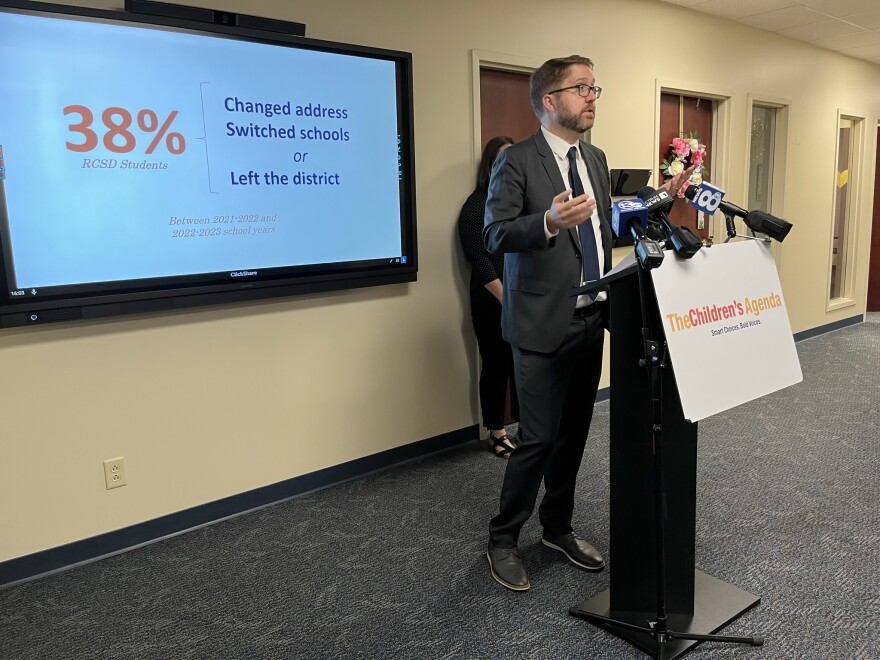A new report from The Children’s Agenda shows that over the past two academic years, 38 percent of Rochester City School District students either changed addresses, switched schools, or left the district, a rate much higher than their peers in the suburbs and across the state.
That’s a sign that thousands of city students are experiencing housing instability, the report said. Research has repeatedly shown that children who don’t have a stable place to live struggle academically, have lower graduation rates, are at greater risk for mental health and behavioral problems, and are in poorer health.
“Children need routine; they need a sense of order in their life,” said Pete Nabozny, the report’s author and policy director for the nonprofit advocacy group. “When you're a child, particularly a young child, the world is new to you. There's so many things you don't quite understand yet and you need some predictability in order to get a comfort with yourself and your surroundings in your life as you're developing and growing.”
The report, “A Place to Call Home,” calls on state officials to enact several programs and policies aimed at “limiting the harm housing instability causes to children” by helping parents pay for safe, quality housing and other necessary household costs. They include:
- Expanding the Empire State Child Credit to ensure that low-income families can receive the maximum credit.
- Creating a state housing voucher program, similar to the federal Section 8 program, to help families afford to rent a decent place to live.
- Providing more subsidized housing.
- Strengthening tenant protections around evictions and ensuring that anyone facing eviction has legal counsel.
- Incentivizing the construction of new affordable housing units.
In the report, The Children’s Agenda also calls for the state to significantly increase its public assistance payments so the benefits cover the actual cost of a market-rate apartment. The state hasn’t increased the housing allowance for public assistance recipients, who generally are very low-income families, since 2003.
In Monroe County, the fair market rate for a two-bedroom apartment is $1,186, and for a four-bedroom apartment, it’s $1,593 – but a family of four receiving public assistance receives a monthly housing allowance of only $374.
When the federal government temporarily expanded its child tax credit during the pandemic, child poverty fell to record lows. Yversha Roman, director of Empire Justice Center’s CASH program, which helps low-income people prepare their taxes, said that once that expansion expired, the service’s clients saw an average 50% reduction in the size of their tax returns.
Roman said she strongly supports expanding the state child tax credit and boosting public assistance housing allowances to match actual rent costs.
“Increasing the shelter allowance and ensuring adequate rental supplements would have a profound positive impact on child poverty and educational outcomes,” Roman said. “It would immediately bring most children whose families receive public assistance above the federal poverty line."



